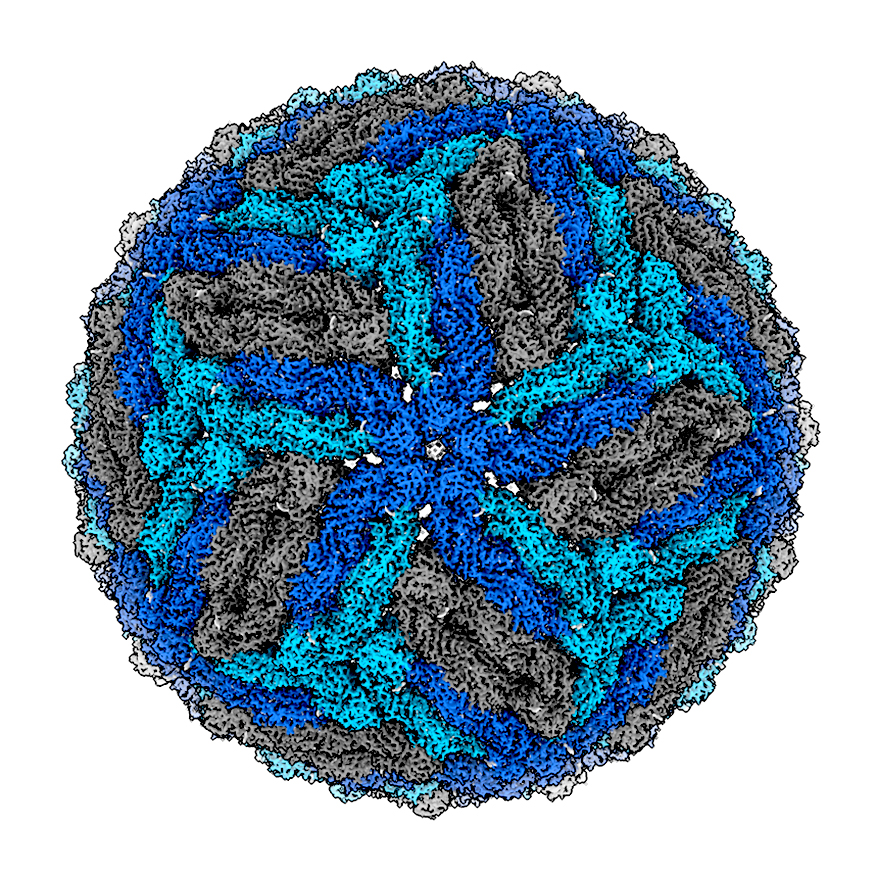The vaccine development platform is based on a harmless-to-humans flavivirus, called Binjari, discovered by Dr Jody Hobson-Peters and her team at UQ. While Binjari can reproduce in mosquitos, it cannot multiply in mammals like humans.
Proteins on the surface of viruses are important in generating an immune response and are often used as vaccines. The Binjari virus is very tolerant to having its surface proteins replaced by those from a disease-causing flavivirus to make a hybrid virus for use as a vaccine. These vaccines have worked well to protect mice against dengue, Zika, West Nile and yellow fever.
One outcome of this research is a new vaccine for Japanese encephalitis virus (JEV) for pigs, developed in collaboration with the Elizabeth Macarthur Agriculture Institute and QIMR Berghofer. JEV is a mosquito-borne disease that infects both pigs and humans but can only be transmitted between the two by mosquitoes. The team plans to use the new vaccine to interrupt the transmission of JEV from pigs to mosquitoes, reducing the risk of infection for humans. Recent trials showed that more than 90% of young pigs were protected. The researchers are collaborating with veterinary company Treidlia Biovet to roll out the vaccine commercially in 2023.
Another significant development is a vaccine to protect farmed saltwater crocodiles from West Nile virus (WNV). Crocodile farming faces a considerable threat from WNV. It causes skin lesions in crocodiles, rendering their hides unsellable and costing the industry millions of dollars each year. Vaccinated crocodiles show a good immune response and long-term protection is now being assessed. The researchers are working with the Centre for Crocodile Research in Darwin to commercialise the vaccine.
The hybrid Binjari viruses are also being used in lateral flow tests (like COVID-19 RATs) for flaviviral diseases. This suite of vaccines and diagnostics has the potential to make a significant impact on public health and Australian agribusiness.
Years of ongoing cryo-electron microscopy at Microscopy Australia’s UQ and Monash facilities to validate the structures of these hybrid viruses. This was done by Dr Daniel Watterson at UQ and Dr Fasséli Coulibaly at Monash University, in collaboration with Dr Hobson-Peters.

Reconstruction of a hybrid Binjari virus (~50nm) from cryo-electron microscopy data acquired at our Monash facility, the Ramaciotti Centre for CryoEM.
Electron microscopy from our University of Queensland Facility in 2019 can be seen in the video below.
J. Hobson-Peters et al., Science Trans. Medi. 2019
DOI: 10.1126/scitranslmed.aax7888
N. D. Newton & J. Hardy et al., Science Adv. 2021
DOI: 10.1126/sciadv.abe4507
G. Habarugira et al., npj Vaccines 2023
DOI: 10.1038/s41541-023-00688-w
With the cryo-electron microscope at our Monash Facility: A/Prof. Fasséli Coulibaly, platform scientist Dr Hariprasad Venugopal, and Dr Joshua Hardy from the Biomedicine Discovery Institute.
February 27, 2024